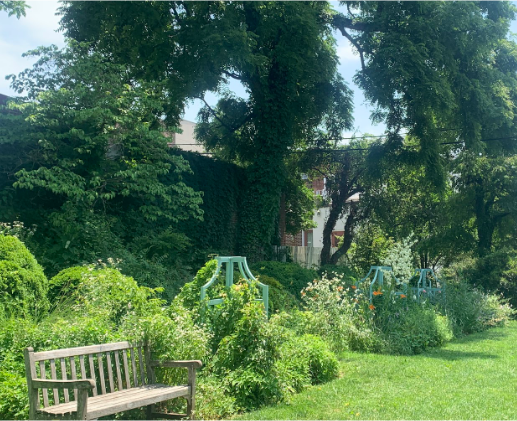The Importance of Nature-Oriented Education

A little over 100 years ago, Germany built the very first “forest school” with the idea that it would improve performance and morale of students that attended it. Because it was difficult to measure the precise extent to which a child’s morale increases, it wasn’t until recently that the amount of evidence supporting the connection between nature and a student’s well being was able to be proved.
Benefits
Scientists were receiving concrete data indicating that children’s cognitive functions were sharpened in a natural environment. Over time, it was also found that when spending time in nature, brain activity significantly increases in the subgenual prefrontal cortex (which is the area that dictates extreme emotions). Berkeley scientists interpret this by making the educated assumption that being in a natural environment comes with an increase in morale; happiness.
Not only does nature-oriented education enhance emotional health, but it’s proven that it allows kids to stay physically healthy as well! Scientists in the United States devised an idea for an “outdoor school” that would help slow the spread of tuberculosis in the early 1900’s, and the evidence showed that they properly mitigated the spread. This is because viral particles are more likely to disperse outdoors with the natural airflow rather than indoors in a confined space, and it’s part of the reason why outdoor gatherings were encouraged rather than indoor gatherings during the COVID-19 pandemic. Schools that took place outdoors were modernized in the 1990’s in England and the US, and even year-round nature-oriented schools will continue to be efficient by encouraging kids to stay happy and healthy and accommodating for students’ and teachers’ needs during the winter months.
Creating a Down-to-Earth Community
Methods such as the following all fall under the category of nature-oriented education:
- Unstructured play outdoors
- Learning academic material while spending time outdoors
- Learning the values of leadership and stewardship by applying your knowledge to situations specific to nature
- In some cases, educating yourself about current events and politics surrounding the state of the environment
Studies on environmental aspects of learning have proven that incorporating nature into the lives of young students can greatly improve concentration. A credible experiment conducted in 2016 proved that when students were tested on their concentration skills, time and time again they ended up performing better on the test in a classroom with ample greenery over a classroom with none at all. There are numerous ways to incorporate the environment in academic life. Anything from eating lunch or studying outdoors to doing hands-on work in nature during the school day can benefit mental and physical health to a great extent.
DNA Barcoding Course at FA
Environmental education is happening right on campus! Aside from the lower school’s frequent visits to our very own sensory garden and the middle school’s outdoor activities such as science classes that take place in nature, the upper school has emerging opportunities when it comes to nature-oriented education as well. With the introduction of this year’s new science elective, “DNA Barcoding and Research”, 18 students have taken the opportunity to visit multiple nature preserves across Long Island during the school day to collect samples of different lichens and aquatic invertebrates. The class works in partnership with the Cold Spring Laboratory to identify the DNA sequences of their samples. Some members of DNA Barcoding class have collected samples at Bailey’s Arboretum, the North Shore Wildlife Sanctuary, and even on the FA campus. After having the lichen and invertebrate samples categorized using field guides, the class moved on to the stage of preserving and refrigerating their samples in highly concentrated ethanol solutions. Classes such as these are taking multiple steps in the right direction when it comes to the incorporation of environmental studies into school life.
Sources
https://www.frontiersin.org/articles/10.3389/fpsyg.2019.00305/full
https://www.naeyc.org/resources/pubs/yc/fall2021/take-it-outside
https://www.gse.harvard.edu/news/uk/21/08/make-outdoor-learning-your-plan
https://greatergood.berkeley.edu/article/item/how-nature-makes-you-kinder-happier-more-creative






